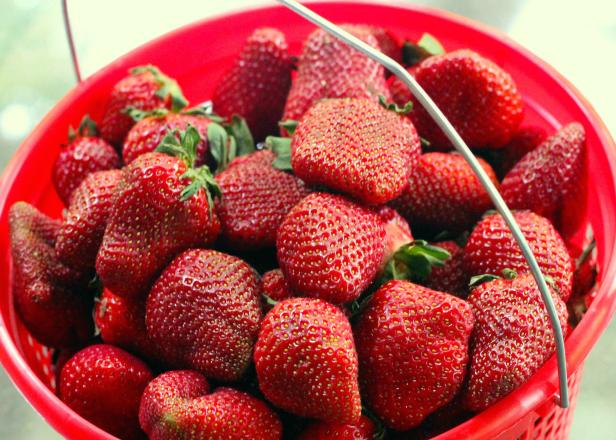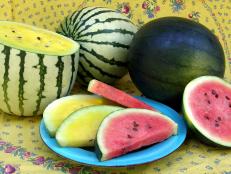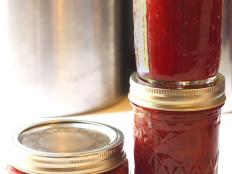How to Store Fresh Strawberries


I grow a few strawberry plants every year, and the best berries of the season are usually those picked in the yard and eaten as I survey the garden, anticipating a summer of luscious, homegrown crops. Growing strawberries at home is a pleasure I wouldn’t give up, but with “U-Pick-'Em” fields and the farmers' market offering the succulent, crimson berry for the next few weeks, the select strawberries from my yard will be overshadowed by gallons and gallons of sourced berries to be cooked into jam, churned into ice cream, served in smoothies and desserts or, best of all, eaten fresh by the fistful.
Fresh strawberries are an unparalleled spring delight, but all too fleeting. Picking more than you can eat this season? Whether you intend to eat them today or six months from now, knowing how to store strawberries will ensure you get the best flavor without losing a single berry to a notoriously short shelf life.
One to Two Days
Fresh strawberries can go directly into the refrigerator, but will do just fine on the counter for a couple of days. Remove any bruised or otherwise marred berries and place the rest in a colander or open-weave basket to allow good airflow. Stems should be left intact until the berry is ready to be eaten to protect the mold-prone, wet flesh inside from exposure. While it is tempting to wash strawberries as soon as you get them home, resist the urge. Strawberries will soak up the water, making them more susceptible to spoilage. Even with careful handling, strawberries won't last longer than a few days without refrigeration.
Three to Seven Days
Moisture is an enemy of the fresh strawberry. The inclination may be to store them in airtight containers, but strawberries will rot more quickly when the moisture is trapped inside. Even the plastic containers in which many grocery store strawberries are packed are a bad choice for refrigerator storage. Instead, immediately pack strawberries loosely in an open container or wide pan lined with paper towels to help wick water away from the delicate berries. Colanders are perfect for strawberry storage, allowing air to circulate freely. Unlike whole berries, once strawberries have been cut or hulled, they should be stored in an airtight container to protect the exposed flesh from mold and bacterial development, significantly reducing shelf life.
Eight Days to Six Months (and Beyond)
Strawberry season only lasts a few weeks, and there’s a reason it’s so hotly anticipated. Fresh strawberries picked just a week ago are already past their prime, but that doesn’t mean you can’t continue to enjoy this year’s haul well beyond the expiration date. Dry-freezing strawberries will retain much of the flavor and some texture for up to six months and can be stored for as long as a year (with some loss of quality). Strawberries canned or frozen in syrup keep some flavor, but will be soft and are best used in baking or stirred into yogurt or oatmeal. Then, of course, there’s strawberry jam.
Freezing comes closest to retaining the qualities of fresh-picked strawberries. Other tactics for long-term storage have their appeal as well, but no preservation method can truly retain the vibrant flavor and firm texture of freshly harvested strawberries.
Time to get picking!













































